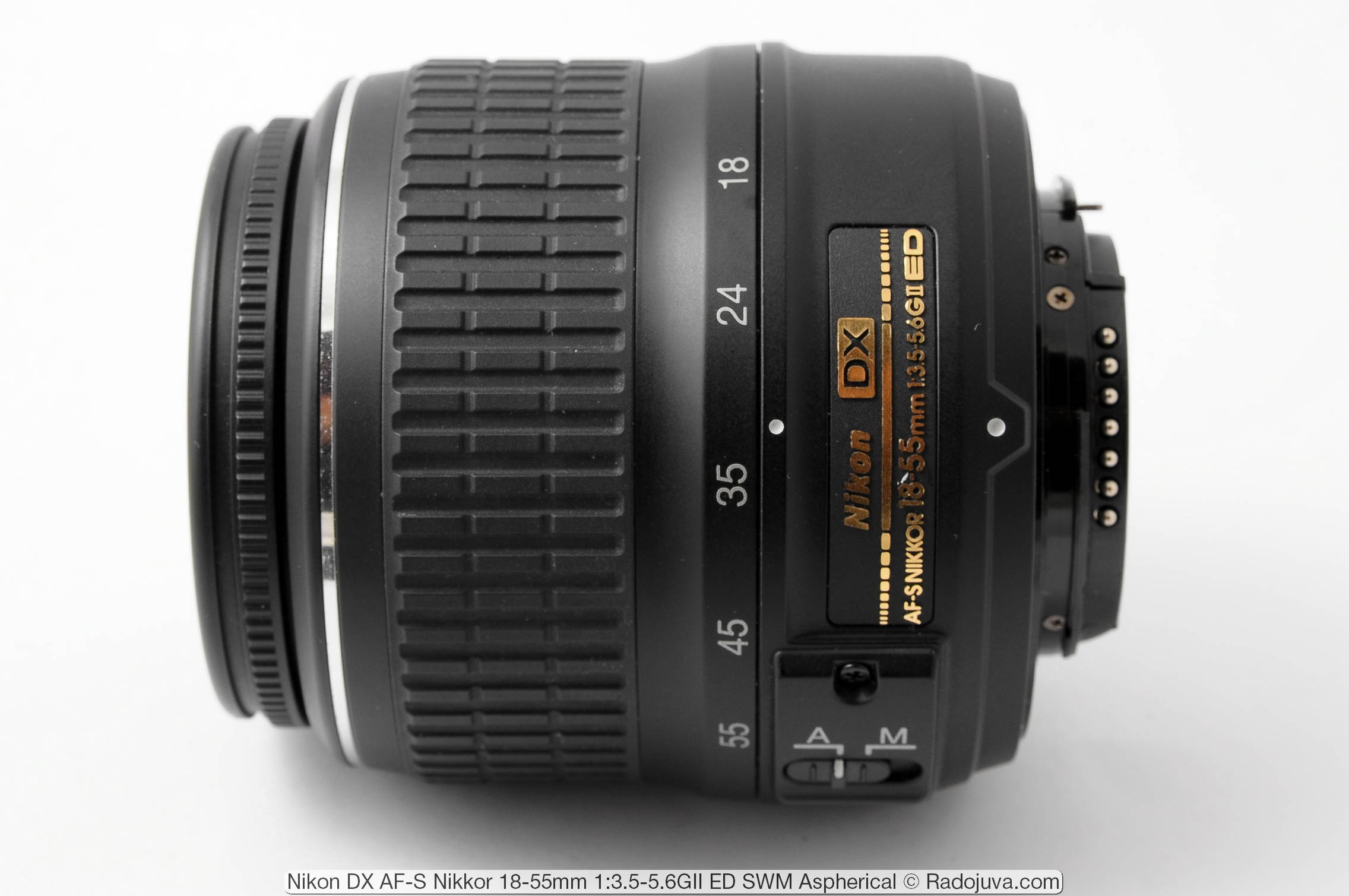
Nikon DX AF-S Nikkor 18-55mm 1: 3.5-5.6GII ED SWM Aspherical
Navigation
- In short
- History
- Differences from the previous version
- Main Specifications
- Assembly
- Focusing
- Full Frame Opportunities
- Image quality
- Sample Photos
- My personal experience with the lens
- All DX Series Lenses for Nikon Cropped SLR Cameras
- Results
- User Comments
- Add your review or question on the lens
In this review, the Nikon DX AF-S Nikkor 18-55mm 1: 3.5-5.6GII ED SWM Aspherical lens I will call in abbreviation Nikon 18-55GII.
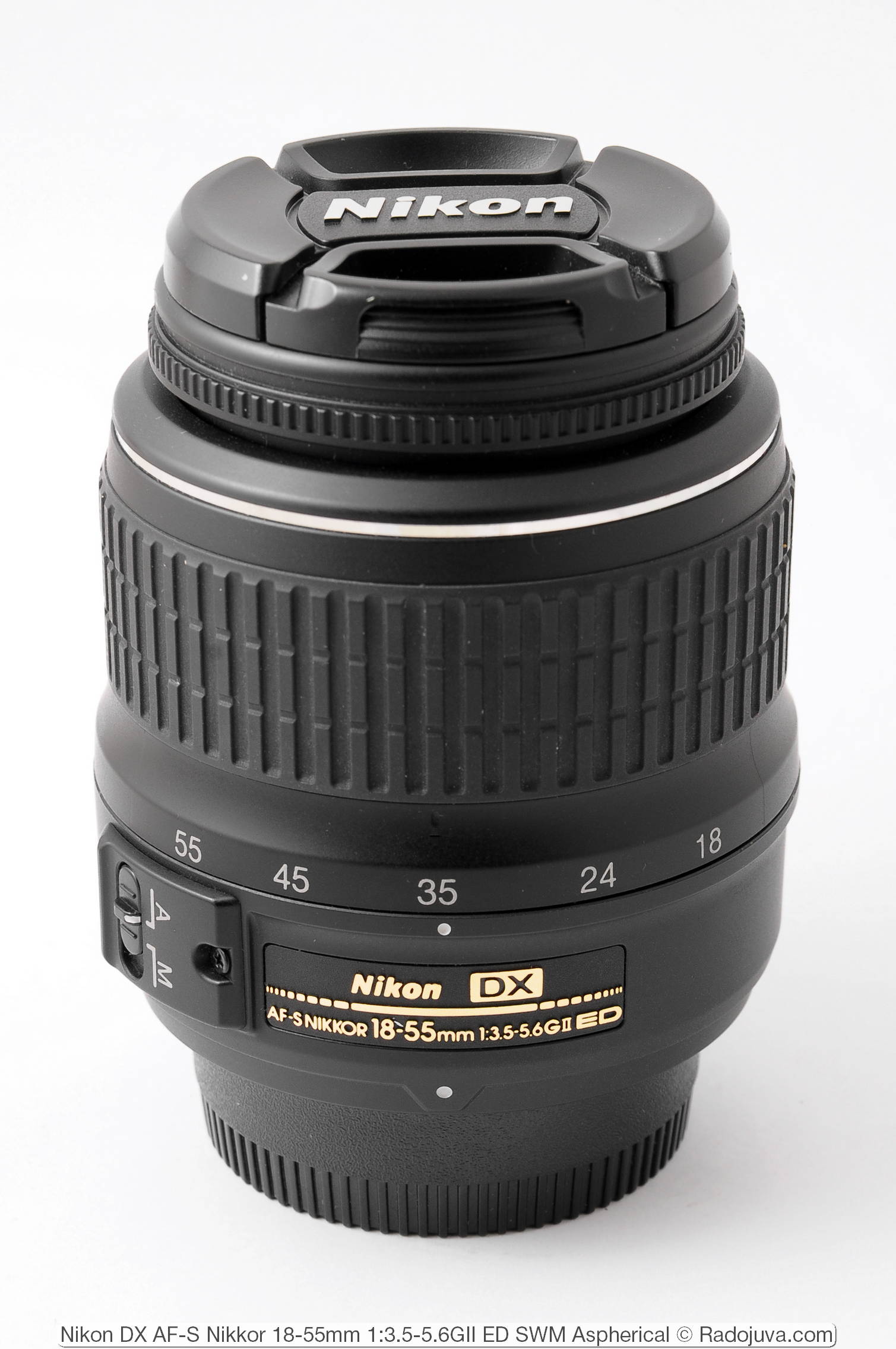
Nikon DX AF-S Nikkor 18-55mm 1: 3.5-5.6GII ED SWM Aspherical
In short
Nikon 18-55GII is a universal standard lens that was considered relevant from 2006 to 2016. Such a lens is also called 'kit' (from the English 'kit' - a set), that is, one that comes with some kind of camera. Nikon 18-55GII was first seen with a camera Nikon D40.
Nikon 18-55GII is light, compact, convenient, with good image quality for its class, but the kit lens is a very controversial and controversial thing.
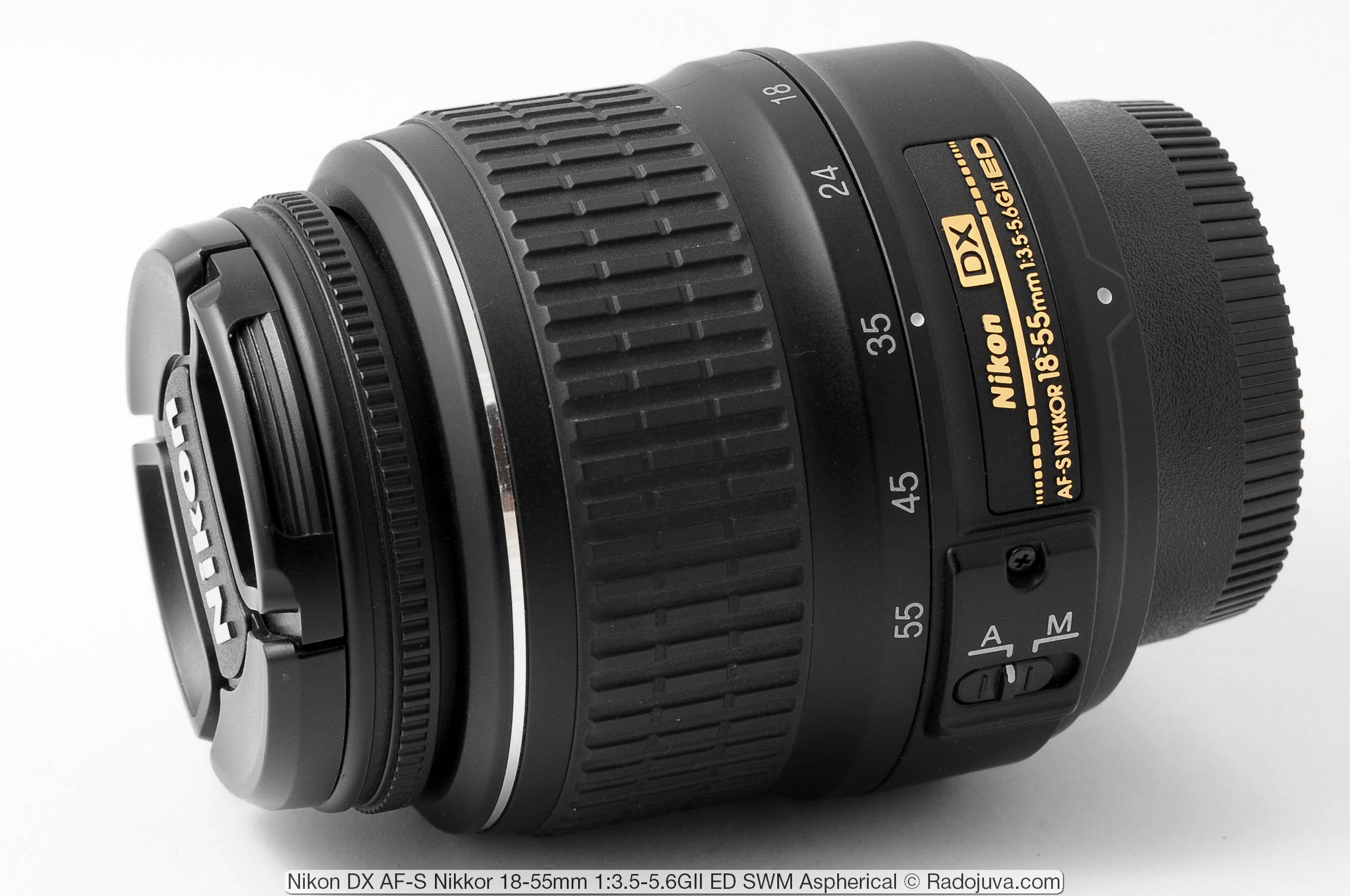
Nikon DX AF-S Nikkor 18-55mm 1: 3.5-5.6GII ED SWM Aspherical
History
A line of standard (i.e. 'whale') class 18-55 / 3.5-5.6 lenses for cameras Nikon DX:
- Nikon 18-55mm 1: 3.5-5.6G ED AF-S DX Nikkor SWM Aspherical - first version. It was produced from 2005 to 2006. It exists in two colors - black and gray / silver. Announced with the camera Nikon D50.
- Nikon 18-55mm 1: 3.5-5.6GII ED AF-S DX Nikkor SWM Aspherical - second version. It was produced from 2006 to 2007. There are no serious differences from the first version, the lenses use the same optical circuit. It exists in two colors - black and gray / silver. Announced with the camera Nikon D40.
- Nikon 18-55mm 1: 3.5-5.6G VR AF-S DX Nikkor SWM Aspherical - third version. It was produced from 2007 to the present day. Has a built-in image stabilizer (Nikon VR, Vibration Reduction). Unlike the first two, it does not have 'ED'-elements in its optical scheme. Announced with the camera Nikon D60.
- Nikon 18-55mm 1: 3.5-5.6GII VR II AF-S DX Nikkor - the fourth version. It has been produced since 2013. Unlike the third version, it has a new optical circuit and can be folded compactly for transportation. Updated stabilization system. For the first time he could be seen with a camera Nikon D3300.
- Nikon DX AF-P Nikkor 18-55mm 1: 3.5-5.6G - fifth version. Available since January 2016. It has a new optical circuit and a new stepper focus motor. Went on sale with the camera Nikon D3400.
- Nikon DX VR AF-P Nikkor 18-55mm 1: 3.5-5.6G - the sixth version. The same as the fifth version, but with a built-in image stabilizer. It was presented simultaneously with the fifth version. Went on sale with the camera Nikon D3400.
- Nikon Nikkor Z DX 16-50 1: 3.5-6.3 VR - seventh version, for mirrorless cameras such as Nikon z50... Available from Fall 2019. New optical design, foldable body, reduced aperture and built-in image stabilization.
Sigma at one time produced an interesting alternative to similar whale lenses in the face of a faster Sigma Zoom 18-50mm 1: 2.8-4.5 DC OS HSM.
Unlike the previous version
Key differences from the previous model Nikon 18-55mm 1: 3.5-5.6G ED AF-S DX Nikkor SWM Aspherical:
- the previous version has been released since April 2005, and the new one since November 2006
- reduced weight by 5 grams
- the body design has changed, first of all the lenses are distinguished by a silver ring near the front lens
- rubber insert for zoom ring has become narrower
- perhaps there are internal differences in the structure of mechanical parts.
In general terms, the new and old versions are not much different from each other, and the official MTF charts do coincide.
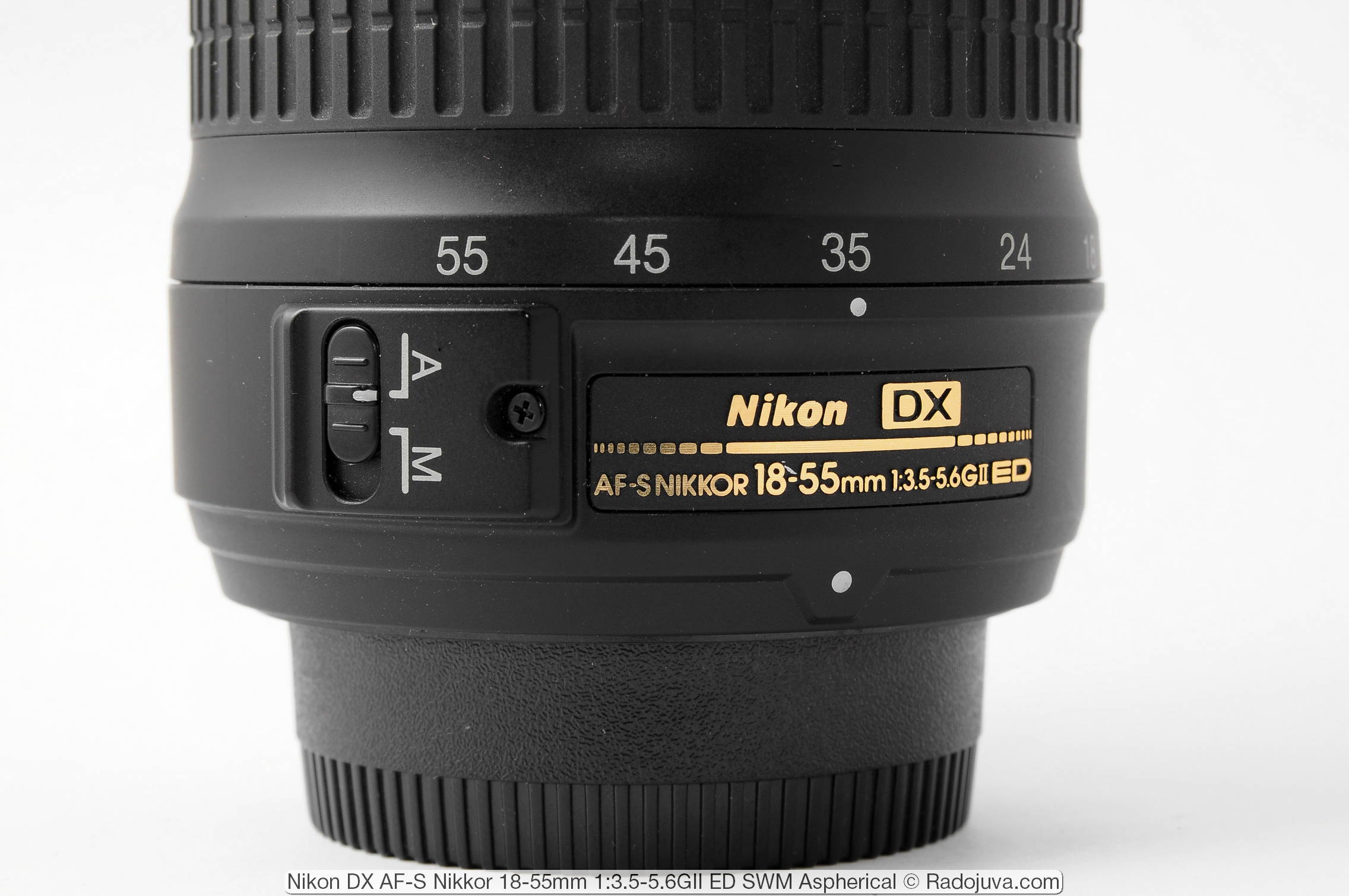
Nikon DX AF-S Nikkor 18-55mm 1: 3.5-5.6GII ED SWM Aspherical
Main technical characteristics of Nikon DX AF-S Nikkor 18-55mm 1: 3.5-5.6GII ED SWM Aspherical:
| Review Instance Name | Gold letters: Nikon DX AF-S Nikkor 18-55mm 1: 3.5-5.6GII ED
In white letters: Nikon SWM ED Aspherical ∞-0.28m / 0.92ft ø52 MADE IN THAILAND + serial number Near the front lens: Nikon AF-S DX NIKKOR ED18-55mm 1: 3.5-5.6GII |
| Basic properties |
|
| Front Filter Diameter | 52 mm, plastic thread for filters |
| Focal length | 18-55 mm EGF for Nikon DX cameras is 27-82.5 mm |
| Zoom ratio | 3.06 X (it’s customary to talk just about 3x zoom) |
| Designed by | for digital SLR cameras Nikon DX |
| Number of aperture blades | 7 rounded petals |
| Tags | focal lengths for 18, 24, 35, 45 and 55 mm, bayonet mount mark |
| Diaphragm | 18 mm from F / 3.5 to F / 22. 55 mm from F / 5.6 to F / 38. The lens is deprived of the aperture control ring, control is via the camera menu (G - lens type) |
| MDF | 0.28 m, maximum magnification ratio for macro photography is 1: 3.2 |
| The weight | 205 g |
| Optical design | 7 elements in 5 groups. The optical system includes 1 aspherical element (in the optical scheme the aspherical element is shown in blue) and 1 ED glass element (shown in yellow in the diagram). Hybrid asferica - glass base with layered plastic.
The image of the circuit is clickable. The same optical scheme used by the lens of the previous generation Nikon 18-55mm 1: 3.5-5.6G ED AF-S DX Nikkor SWM Aspherical |
| Lens hood | Nikon HB-33, bayonet type (not supplied, and must be purchased separately) |
| Manufacturer country | MADE IN THAILAND (Made in Thailand) |
| Period | From November 2006 to 2016 (according to the official website), subsequently replaced / supplemented by a lens Nikon 18-55mm 1: 3.5-5.6G VR AF-S DX Nikkor SWM Aspherical. |
| Price |
The Nikon 18-55GII is the latest in a series of 18-55 class lenses to incorporate a low-dispersion element, which is referred to in its name as 'ED'.
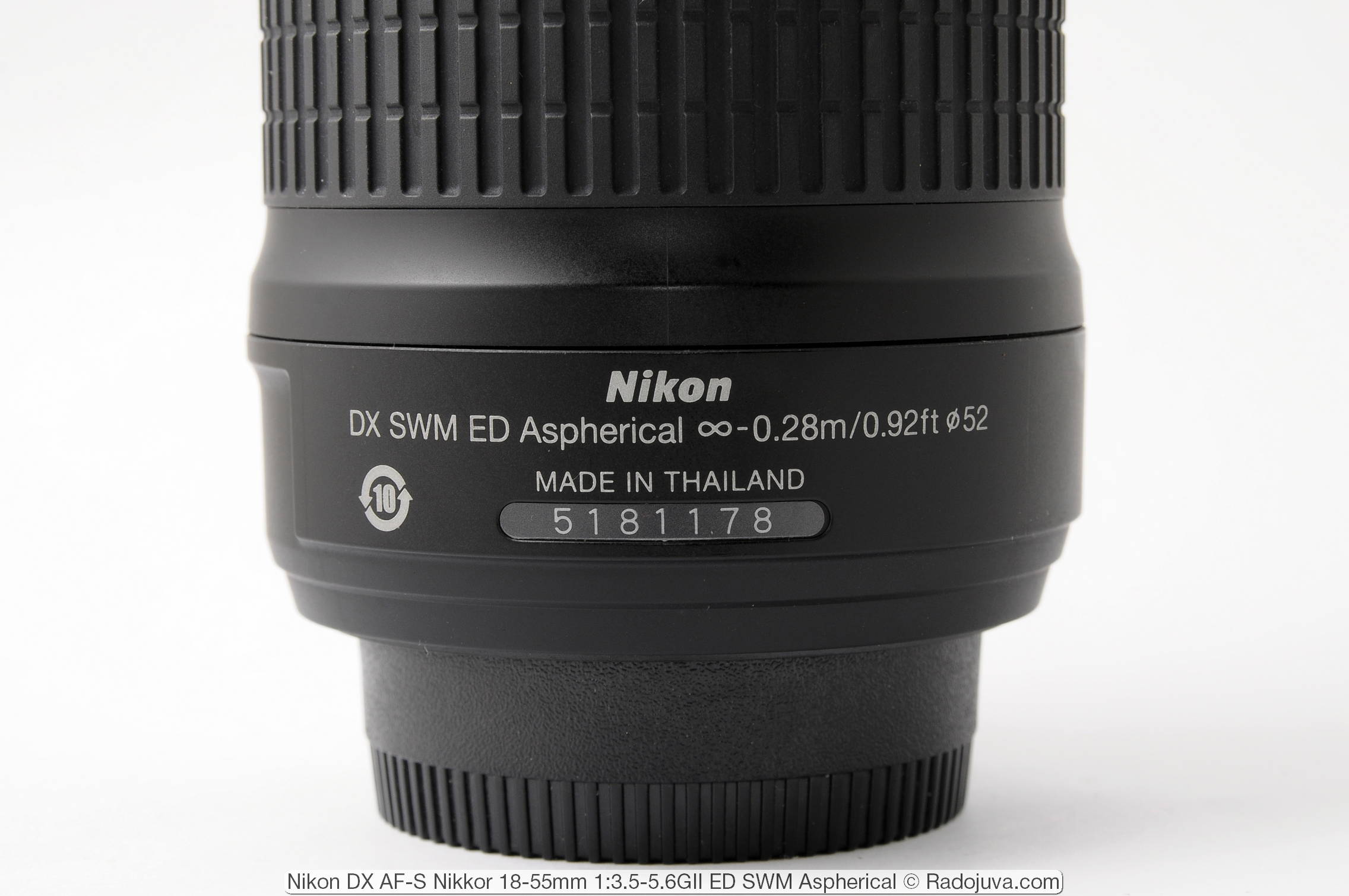
Nikon DX AF-S Nikkor 18-55mm 1: 3.5-5.6GII ED SWM Aspherical
Assembly
Nikon 18-55GII was made only in Thailand.
The retractable frame of the body ('trunk') consists of 1 section, which is strong enough, without any backlash.
The entire lens housing is made of plastic, including plastic reinforcement bayonet. The zoom ring is rubberized, but the focus ring is not. The change in focal length is smooth. The plastic made the lens light enough.
The Nikon 18-55GII itself is small, with a standard filter diameter of 52 mm. All Nikon 18-55 whale lenses use 52 mm standard diameter filters and are very similar in appearance.
There is a bayonet mount mark on the case. The lens uses a plastic hood, which is fixed in special grooves located near the front lens of the lens. When you change the focal length, the lens hood moves with the front of the lens.
When changing the focal length, the rear lens moves in the middle of the lens body like a pump - it draws in and pushes out air. This behavior of the rear lens is called 'vacuum cleaner effect', which can increase the amount of dust that accumulates in the camera.
The number of aperture blades is 7 pieces. Moreover, they are well rounded enough.
There are no special complaints about the assembly.
Important: this lens was also supplied in a silver case, which combined well with the silver camera options Nikon D40.
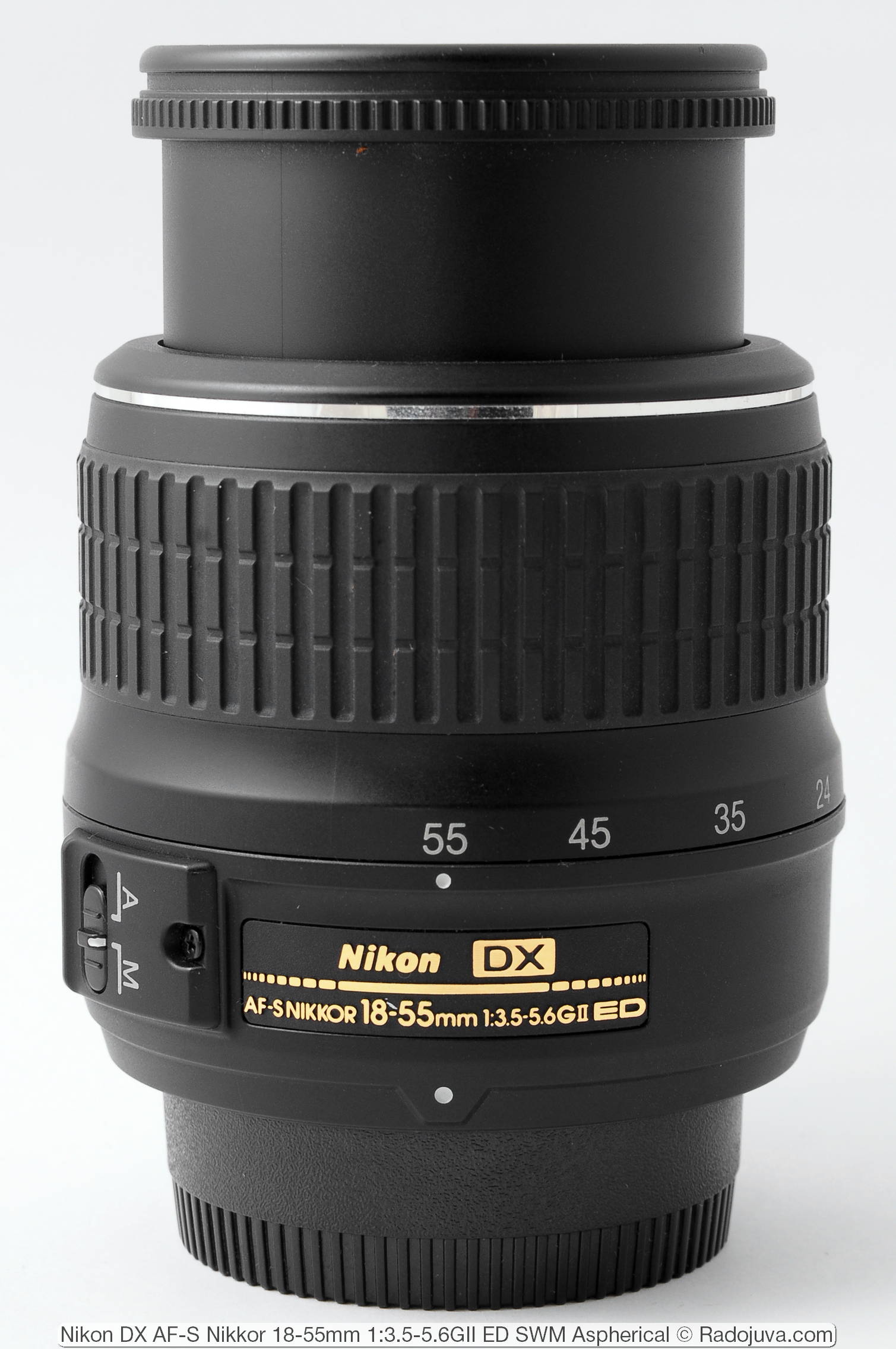
Nikon DX AF-S Nikkor 18-55mm 1: 3.5-5.6GII ED SWM Aspherical
Focusing
Ultrasonic focus motor integrated in the lens SWM (Silent Wave Motor) lets you focus on All Nikon Digital SLR Cameras, even on the simplest.
Nikon 18-55GII has a focus switch 'AM', to perform manual focusing, be sure to set it to the' M 'position, otherwise the focusing motor may be damaged. Unfortunately, the lens does not have a constant manual focus control mode - Nikon M / A.
When used on a camera Nikon D90 with unpretentious Multi-CAM 1000 focusing system the lens behaves well. With precision and clinging focus, I had no particular problems. The lens clings well to captured subjects, rarely re-focusing. The number of focus misses is minimal.
Auto focus speed average, comfortable for the vast majority of photo tasks. Focus speed is significantly lower than professional Nikon DX AF-S Nikkor 17-55mm 1: 2.8G ED IF SWM.
During focusing, the front lens rotates together with the filter and travels forward, which is the most inconvenient solution when using special filters.
During auto focus focus ring rotates and cannot be touched.
In manual focus mode, the focus ring rotates 60 degrees. Manual focus is inconvenient. When extreme positions are reached, the focus ring abuts and cannot be rotated further.
The minimum focusing distance is only 28 cm (the distance from the camera’s matrix to the subject). With such an MDF, the maximum magnification ratio is 1: 3.2. it good indicator for a similar lens. Thus, the lens allows you to shoot a good amateur 'close'.
When shooting at a maximum magnification of 1: 3.2, the distance from the subject to the front lens of the lens is about 15 cm.
Focus Features:
- There is little noise from autofocus.
- There is a small effect of 'Focus Breathing' (changing the viewing angle during focusing). During focusing towards MDF, the viewing angle increases.
- When changing the focal length, focusing is a bit confused.
- Nikon 18-55GII Macro does not have hard stop (hard infinity mechanical stop) which allows you to accurately and quickly focus the lens at infinity under any external conditions.
- Focus shift (shift-focus) was not noticed.
- Nikon 18-55GII has no focus problems in Live View (tested on Nikon D90 ), but it focuses slowly (the problem of the Live View mode on many Nikon cameras is more of a problem).
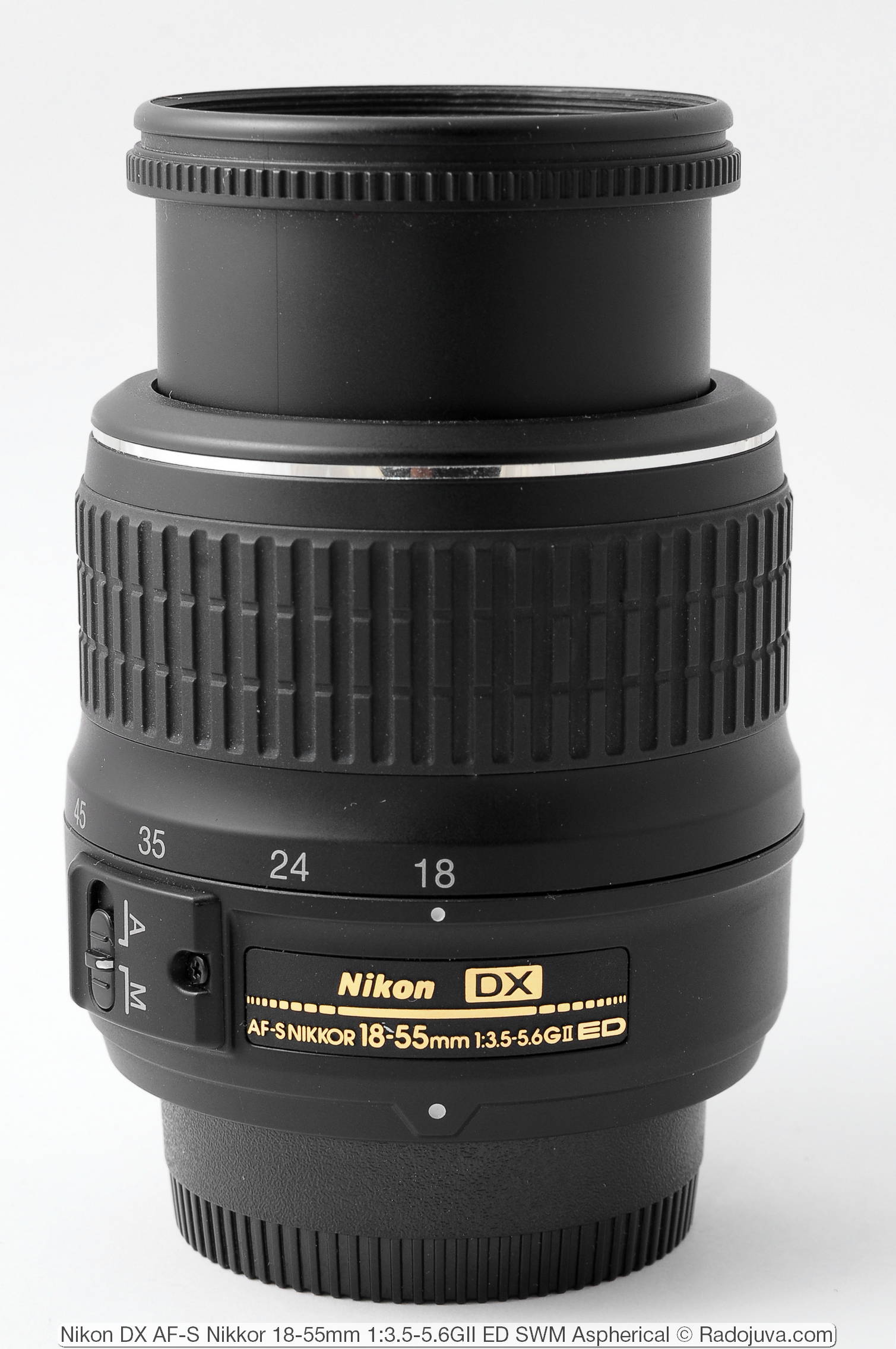
Nikon DX AF-S Nikkor 18-55mm 1: 3.5-5.6GII ED SWM Aspherical
Image quality
Nikon 18-55GII uses exactly the same optical design as its predecessor Nikon 18-55mm 1: 3.5-5.6G ED AF-S DX Nikkor SWM Aspherical. Optically, the Nikon 18-55GII is a pretty tolerable lens.
Sharpness
- confident sharpness at open apertures in the center of the frame over the entire range of focal lengths
- low sharpness at the edges of the frame and open apertures
- at the edges of the frame, sharpness becomes acceptable after f / 8
- good / excellent resolution in the center of the frame on covered apertures (in the F / 5.6-F / 10 region) over the entire range of focal lengths
- the overall level of distortion is at a level typical for such lenses
- pretty strong distortion only visible at 18 mm
- distortion practically absent and imperceptible in the range of 24-55 mm
- in the wide-angle range, the nature of the distortion barrel-shaped
- the nature of distortion is unified, easily corrected in the editor
- general level vignetting is at the level typical for such lenses
- the strongest vignetting appears at 18mm & f / 3.5
- vignetting decreases with focus towards MDF
- vignetting almost completely disappears at F / 8
- vignetting easily fixable in the editor
Aberration
- the strongest chromatic aberration visible at 18mm & f / 3.5 at the edges and corners of the image
- general level HA is at the level typical for such lenses
Rest
- color rendering neutral
- pronounced effect of a 14-ray star on strongly covered diaphragms
- a small amount of glare in the backlight, a slight drop in contrast in the side light. Immunity is at a good level.
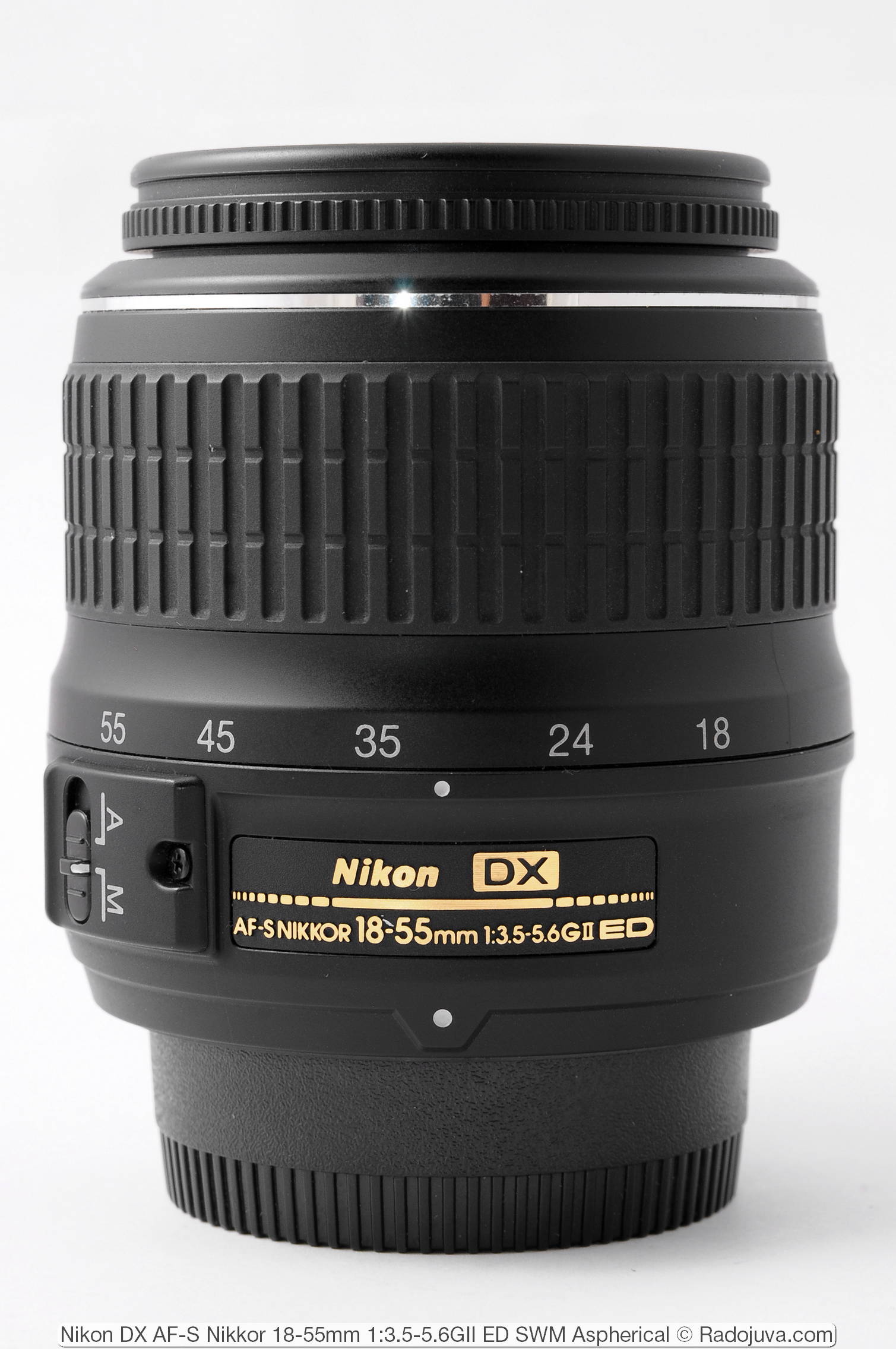
Nikon DX AF-S Nikkor 18-55mm 1: 3.5-5.6GII ED SWM Aspherical
Full Frame Opportunities
Nikon 18-55GII in the range of focal lengths of 24-55 mm easily covers a full-frame sensor without perceptible vignetting. The reserve for frame coverage is simply huge. On the Nikon D700 this lens in the center of the frame is very sharp.
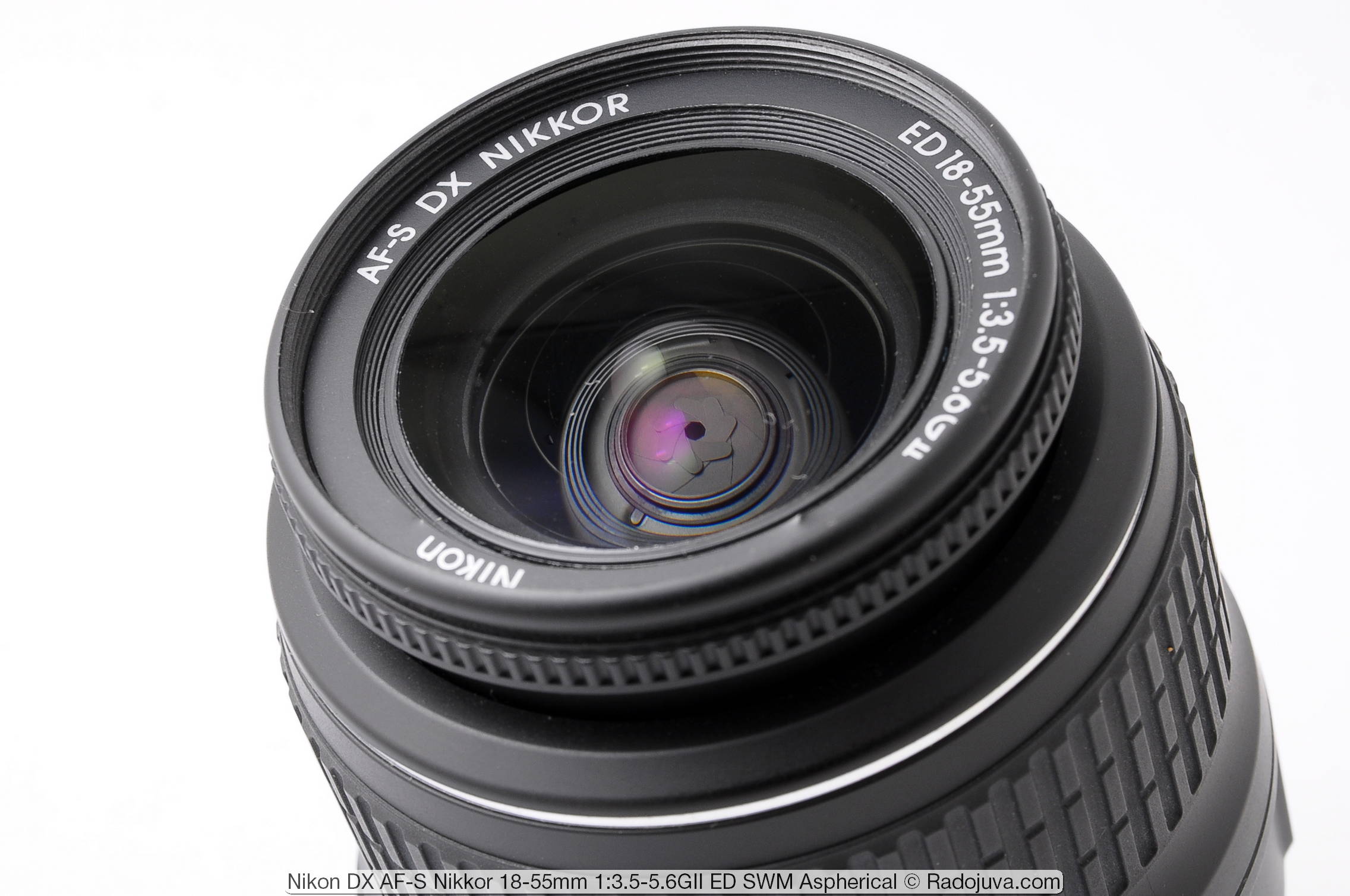
Nikon DX AF-S Nikkor 18-55mm 1: 3.5-5.6GII ED SWM Aspherical
Sample Photos
Camera shots Nikon D90. On-camera JPEG from one of the readers of Radozhiva.
Jpeg source photos download from this link (77 photos, 230 MB).
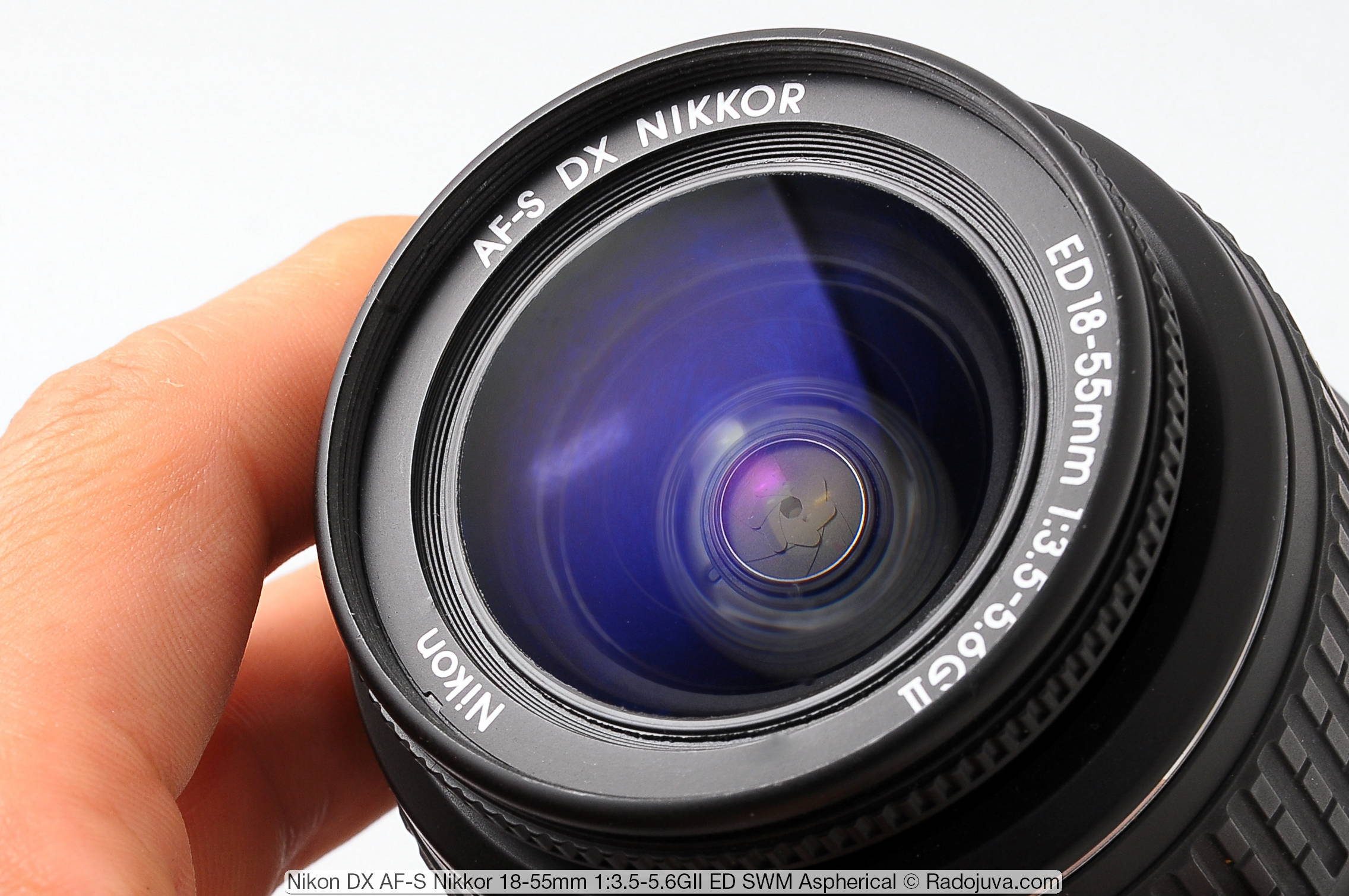
Nikon DX AF-S Nikkor 18-55mm 1: 3.5-5.6GII ED SWM Aspherical
My experience
Underestimated lens. Good for its time. FROM Nikon D40 in 2006 it was just a chic whale kit, which for a modest amount of money allowed to make a lot of good shots. It is very difficult to overestimate the convenience of such a lens.
Comments on this post do not require registration. Anyone can leave a comment. Many different photographic equipment can be found on AliExpress.
An accurate list of all Nikon DX Nikkor lenses
- 10.5 mm/ 2.8G AF Fisheye [gold ring]
- 35 mm/1.8G AF-S
- 40 mm/2.8G AF-S Microphone
- 85 mm/3.5G AF-S VR Microphone
- 10-20 mm/4.5-5.6G AF-P VR
- 10-24 mm/3.5-4.5G AF-S
- 12-24 mm/4G AF-S [gold ring]
- 16-80 mm/ 2.8-4IN AF S VR [gold ring]
- 16-85 mm/3.5-5.6G AF-S VR
- 17-55 mm/2.8G AF-S [gold ring]
- 18-55 mm/3.5-5.6G AF-S [black / silver]
- 18-55 mm/3.5-5.6GII AF-S [black / silver]
- 18-55 mm/3.5-5.6G AF-S VR
- 18-55 mm/3.5-5.6GII AF-S VR
- 18-55 mm/3.5-5.6G AF-P
- 18-55 mm/3.5-5.6G AF-P VR
- 18-70 mm/3.5-4.5G AF-S
- 18-105 mm/3.5-5.6G AF-S VR [Thailand / China]
- 18-135 mm/3.5-5.6G AF-S
- 18-140 mm/3.5-5.6G AF-S VR [Thailand / China]
- 18-200 mm/3.5-5.6G AF-S VR [Japan / China]
- 18-200 mm/3.5-5.6GII AF-S VR
- 18-300 mm/3.5-5.6G VR
- 18-300 mm/3.5-6.3G VR
- 55-200 mm/4-5.6G AF-S [black / silver, Japan / China]
- 55-200 mm/4-5.6G AF-S VR
- 55-200 mm/4-5.6GII ED VR
- 55-300 mm/4.5-5.6G AF-S VR
- 70-300 mm/4.5-6.3G AF-P
- 70-300 mm/4.5-6.3G AF-P VR
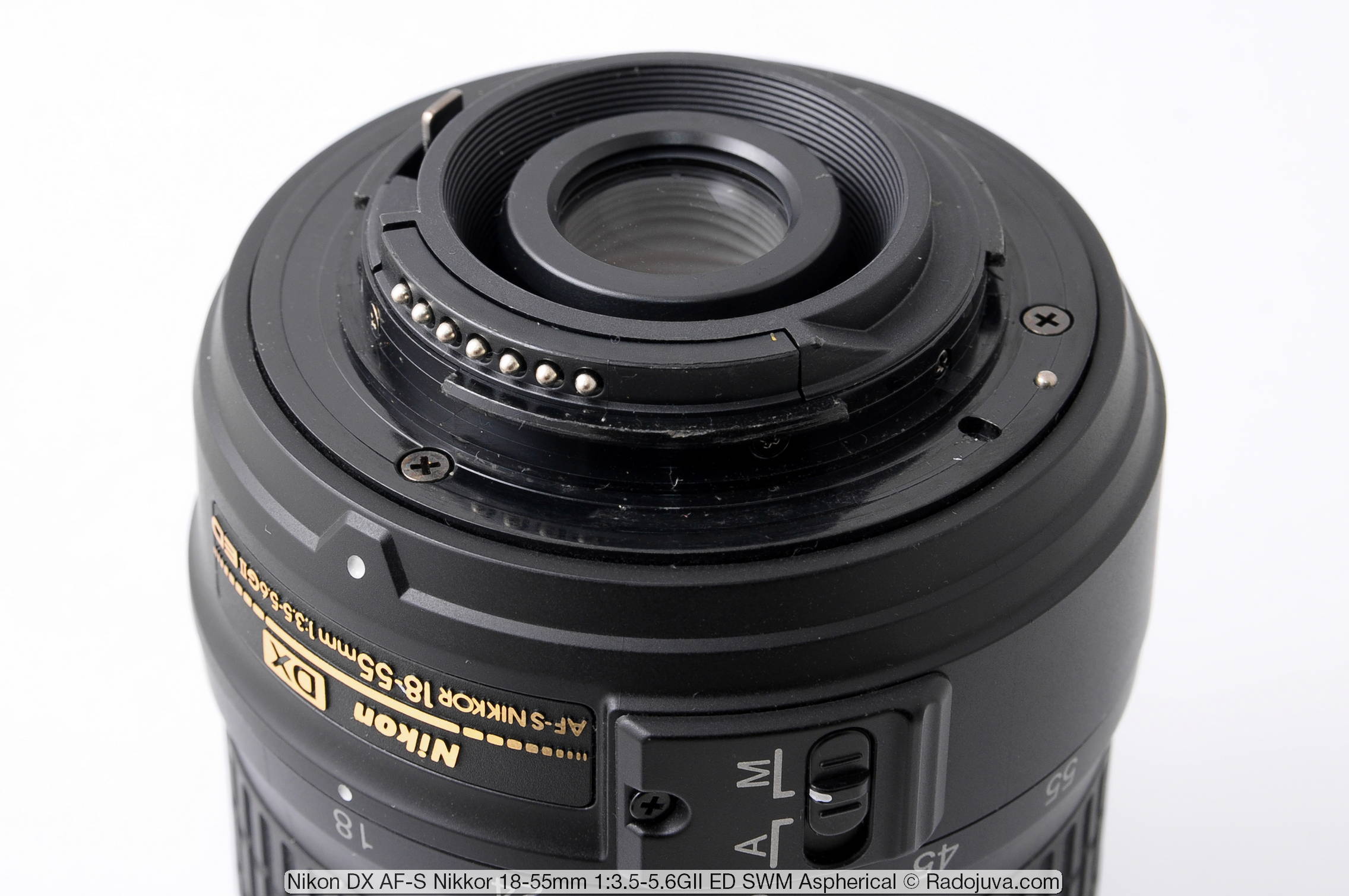
Nikon DX AF-S Nikkor 18-55mm 1: 3.5-5.6GII ED SWM Aspherical
Results
Nikon 18-55GII is a simple full-time lens included with some cameras. The model is outdated, but still is a good budget solution for simple amateur photo tasks.
- low cost in the secondary market
- convenient set of focal lengths
- light weight and compact size
- bayonet type hood
- special optical elements in the optical scheme (1 aspherics and 1 low dispersion element)
- good maximum magnification ratio for macro shooting, which is 1: 3.2
- ultrasonic built-in focus motor
- the presence of a lens profile in most popular RAW converters (certainly there is in ACR, Lightroom)
- fairly flat aperture at hidden values
- good optical performance (good sharpness on covered apertures in the center of the frame, normal sharpness on open apertures in the center of the frame, other parameters are within the normal range for this kind of lens)
10 main disadvantages
- small stroke of the focus ring, insufficiently convenient manual focus
- low focusing speed (at the same time convenient enough for a large number of amateur photo tasks)
- no image stabilizer (appeared in Nikon AF-S 18-55 / 3.5-5.6G VR)
- plastic mount
- no hood included
- rotation of the focus ring during auto focus and as a result there is no constant manual focus mode M / A or A / M or the like (appeared in Nikon AF-P 18-55 / 3.5-5.6G VR)
- lack of dust and moisture protection (for example, such SMC Pentax-DA 1: 3.5-5.6 18-55mm AL WR)
- optical design is not updated and is used from the lens Nikon AF-S 18-55 / 3.5-5.6G ED
- rear lens movement while changing focal length
- palpable barrel-shaped distortion 18 mm focal length, tangible vignetting 18 mm focal length, poor resolution at 18 mm in the corners of the frame on open apertures. Other optical flaws inherent in similar lenses
Material prepared Arkady Shapoval. Training/Consultations | Youtube | Facebook | Instagram | Twitter | Telegram

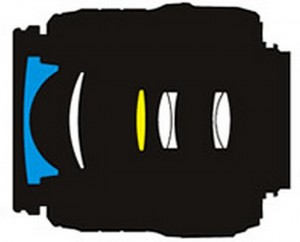






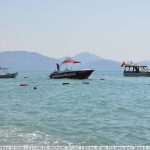




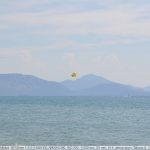


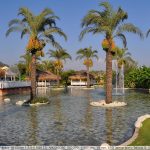




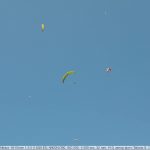
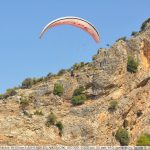
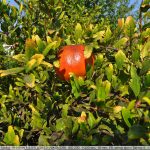

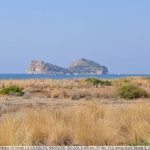




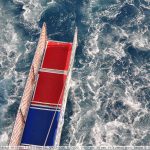














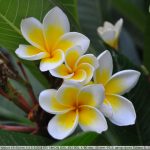
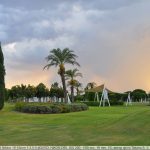

This was your answer on July 19, 2011.
I’ll tell you one thing, he’s been in my focus for 3 weeks, and then, in general, the front lens began to stagger - and the service says that there was a type of blow (they are excused from warranty repair)
The lens is not bad! But they are all very different in quality, the quality walks a lot, just like in Soviet optics. You need to choose well. Of the six lenses, I came across only one with good sharpness and contrast on all apertures. Photos are colorful and sharp!
But I don’t understand at the maximum aperture (3,5) on the street in good lighting, I try to take a portrait with a distance of 1.5 - 2 meters and it turns out that everything is in focus, the background does not blur .. what am I doing wrong?
The portrait needs to be photographed on telephoto lenses, from 50mm on. In your case, at 55mm and F5.6
I have such a lens, and to say that it is quiet when focusing is NO IT IS LOUD, and when shooting a video it is VERY LOUD !!!
“There is no hood - the hood is not included in the kit, and it is very difficult to buy (if it is possible at all).” - not true, without any problems I bought a hood for 50 UAH. 20.06.2012/XNUMX/XNUMX (for reference)
Unfortunately, I must state the fact that the hoods are really not in the kit. I'm interested in the question, did you buy an original hood for 50 UAH from Nikon?
April 3, 2011 bought a NikonD5000 - body and deliberately took AF-S DX Zoom-Nikkor18-55mm f / 3.5-5.6G EDII separately The quality of the pictures is really impressive. Some of the images taken with this lens can be seen by following the link. All images can be seen in full resolution and you can even download them. Processing is very minimal, because I myself am not a fan of wasting time on processing. After looking at my pictures, many do not believe that this is possible. I also looked at the Nikkor35mmf / 1.4 and Sigma 30mm fixes and none of them bypassed my whale lens in terms of image quality and sharpness. Well, lastly, I'll tell you a lot depends on your settings in the camera itself when you shoot. If you don't know this, you don't read the instructions, etc. even having an expensive lens you will never get what you want.
http://www.panoramio.com/user/4925131?show=all my pictures
They wrote everything correctly. Thanks for the link.
Can you tell me something about the Nikkor 18-70mm f / 3.5-4.5G IF-ED AF-S DX Zoom-Nikkor? to win in portions of 18-55 and 18-105. viglyadaє, like gold is the middle of the middle of tsimi dvoma by assets. what is true so?
Option 18-70 is a very successful lens, it is strange that many forgot about it. I consider it a good alternative to whale and one of the best whale zooms for Nikon DX cameras.
Arkady, you write about problems with filters. By gradient, it would seem clear, but what are the problems with others? And yet how difficult will it be to use a gradient filter?
Filter problems are limited by the fact that the front lens rotates when focusing.
Excuse me Arkady, I didn’t understand, a rotating lens will not allow installing a protective filter? Or will the filter limit focus? And one more question, distracting from the topic of filters, if I take 18-105, will I lose this whale as a picture? Thanks in advance for your reply.
You asked about the gradient filter, it is inconvenient with it, since the spatial orientation, which is constantly lost when focusing, is important for it. For a protective filter no matter, it will quietly work for itself. 18-105 a slightly different lens, generally better for 18-55
So I want to replace the kit with something better and more universal, now I am considering several lenses: Nikon 16-85 mm f / 3.5-5.6G ED VR AF-S DX Nikkor, Sigma AF 18-50mm f / 2.8-4.5 DC OS HSM Nikon F, Tokina AT-X 16.5-135mm f / 3.5-5.6 DX Nikon F. Maybe you used it or tested it, or maybe you will advise something else. I would be very grateful for the answer, at least some :)))
There are such https://radojuva.com.ua/2012/06/tamron-af-17-50mm-f2-8-vc/ и https://radojuva.com.ua/2011/11/tamron-17-50mm-f2-8-xr-di-ii-ld-aspherical-if/
It’s a pity, but I didn’t even consider Tamrony, since everywhere they write that they have a large% of marriage, although I bought 28-75 2.8 not so long ago, I don’t take pictures of 2.8 because it’s not working, I did not check the front focus because I didn’t I know how and honestly it seems to me that it seems that one of the two is there, I took it at my own peril and risk, but I am happy with it like an elephant :))) If I took Tamron, it would only be 70-200. Okay, I myself will think something, choose, but thanks anyway for the advice.
I shoot with a Nikon DX 18-55mm lens, I began to notice that when you get as close as possible on the photo camera, the picture is high-quality, and on the computer the picture becomes pixelated (cubes). What is the problem? In the lens? What to do? Or need to take a new one.
The picture "cubes" depends on the noise, on the ISO.
Small.ru@mail.ru
Small.ru@mail.ru
No, the hood is worn in the grooves on the front lens, a filter is wound.
Small.ru@mail.ru
It would not be bad if you wrote a comment in the comment field, and an e-mail in the e-mail field. Model HB-33
Thanks for the advice. I apologize for sitting on the phone.
selling my Nikon 18-55mm f / 3.5-5.6G VR 0633938973
I tried a year ago to shoot on Helios 44 Nikon D3100, (before that I only shot on 18-55), after which I never shot 18-55. Then I bought Helios 81n, Jupiter 37a, now I’m thinking of selling 18-55. although it has a wide angle . the image on it in my opinion is somehow plastic, like sharpness.
The 18-55 lens, of course, is not a gift, in the hands of amateurs who constantly whine that it is bad, etc., and whine that it is cheap, and it looks ponto-free in appearance ... Yes, it has drawbacks, this is great the number of CAs, various kinds of aberrations, the front movable lens, because of which it is inconvenient to focus manually, it begins to wobble over time, thereby knocking out the focus, and by design this scheme is very capricious and fragile, BUT if you do not use Auto-mode, but shoot on the hand, and study all the problems of this glass in order to be able to bypass them, then you will get good pictures, experience comes in the struggle, not in whining! I shot at 18-55 for almost a year, at first there were a lot of jambs, but I I shoot for creativity, and I am interested in the art of photography, so over time I learned to shoot quite wonderful pictures with it. Now I have in my hands not only 18-55, but also 18-200, and the last one I have a staff, but if necessary I do not disdain to shoot with my old whale. Camera d5100
Arkady
I'd love to read your review about Nikon 18-200 DX. With respect to the author of this article.
Good afternoon. First, a huge thank you Arkady to you and all the readers for such a wonderful resource ... Like most, I will ask for advice. I got my first DSLR (Nikon d5100 body). I deliberately took it without a whale, but now I just can't decide which first (as a standard) lens to buy. Due to some limited finances, I look towards 1) Nikkor DX 35mm f / 1.8G AF-S 2) Sigma 18-50 mm f2.8-4.5 DC OS HSM possible 3) Tamron AF 17-50mm f / 2.8 SP XR Di II LD VC (I have never seen it on sale here). After reviewing the photographs that I had taken earlier, I determined that the main subjects of shooting are people on the street, this is a full-length or bust portrait, landscapes are very rare. What would you advise to buy in this price category, while not losing sight of the quality of the lens itself and the quality of the resulting images (I love bokeh :)). Thanks for any comments and advice.
I recommend the Nikon 35mm f / 1.8G AF-S DX Nikkor as it is very good. Sigma and Tamron - it is difficult to find a normal one, and if there are few shops in the city, then there is practically nothing to choose from, and 35 is practically without marriage, + gives aperture. I wish you good luck with your choice.
Thank you very much, it was decided there will be 35. Good luck in everything!
Good afternoon, please tell me I have a d7000 and now I want to get the optics for it (tokina 11-16 and maybe 16,5-135 tokina) but these lenses are screwed and focus for a long time during the video. I would like to know which it’s better to take the lens for video (maybe the simplest Nikonovsky 18-55 or 18-105 sr will be enough.) I also wanted to hear your opinion about the quality of the token lens 16,5-135. the thing is that I want to buy a polarik, a gradient and neutral gray Kenko filter, and they are far from cheap, so I select lenses with the same diameter for the filter so that I won’t waste it again (at the cost of another lens). Thank you
I didn’t work with Tokina 16-135, I can’t say. Usually, for a video, a station wagon of the type 18-105 is enough.
thanks and if Nikon 18-135mm f / 3.5-5.6 ED-IF AF-S DX Zoom-Nikkor
You can and him.
I bought a used lens, the former owner used it for 1,5 years with the Marumi filter. When testing the lens, it seemed to me that it noticeably lathers the picture, but the main thing is that the colors are somehow dull, like a little discolored. And the image is somehow flat. Can a light filter affect (I don't know the type of filter, the usual transparent one) on colors and degrade the quality of the picture? my telephoto lens gives the best color and volume. Or the lens is already “old” and there is something worn out. What is an image? Thanks for your reply in advance.
Flat image compared to 55-200 due to shorter focal length. The lens is not very sharp in the open.
The lens 18-55 is wonderful, bought with the D3100. True, after he got fifty dollars, he began to notice that he was not so cool anymore. Obviously the difference is not only in the bokeh, but also in clarity :-).
Distant objects (it doesn’t matter on which aperture, 8, 11, 22, it’s still one object, not a landscape) at 18-55 magnification on the computer look blurry, although at fifty dollars under the same conditions I can zoom in to the squares and that's it clearly.
There is no problem with nearby objects. Everything is amazingly sharp.
So can there be a problem with focus in the long run in this case, or is there still a problem with the quality of the optics of a whale lens and there is nothing to be done about it?
Thanks in advance for the answer!
When focusing on infinity, the lenses, roughly speaking, lose their detail + the whale lens itself is still not the best.